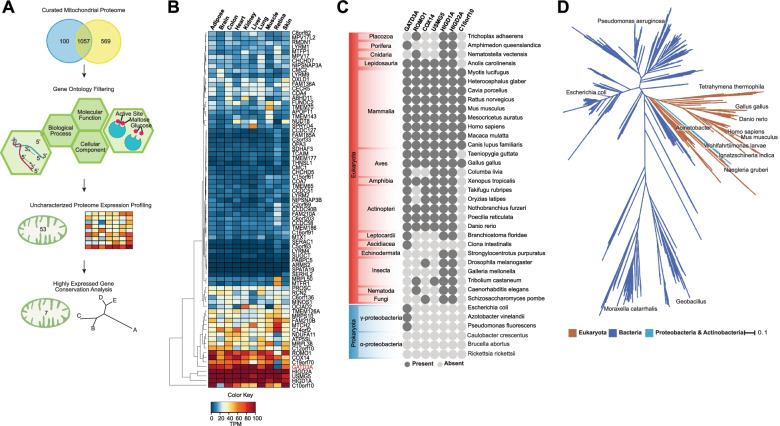Fig. 1.
Mammalian GATD3A exhibits bacterial provenance distinct from the mitochondrial progenitor. A Workflow examining proteins from MitoCarta 2.0 and MitoMiner 4.0, based on biological process or molecular function. Of the 53 poorly characterized mitochondrial proteins, GATD3A was selected for further analysis based on expression profile and evolutionary conservation. B Expression analysis of genes encoding uncharacterized mitochondrial proteins across human tissues in GTEx and retinal RNAseq data. We selected the cluster of highly expressed genes for conservation analysis. TPM denotes transcripts per million. C Evolutionary conservation of seven uncharacterized predicted mitochondrial proteins—GATD3A, ROMO1, COX14, USMG5, HIGD1A, HIGD2A, and C10orf10, exhibiting high expression of corresponding genes in human tissues. None of the proteins barring HIGD1A and HIGD2A have a close alphaproteobacterial homolog. GATD3A is the only protein with homologs in gammaproteobacteria and some other bacterial lineage. D Phylogenetic tree showing the evolutionary relationships of GATD3A homologs in eukaryotes as well as bacteria. The clade in blue color represents bacteria, clade in brown color represents eukaryota, and clade in light blue color represents the following bacteria Paludibacterium purpuratum, Chitinimonas sp. R3-44, Crenobacter luteus, Vogesella sp. YM-1, Microvirgula, and Gulbenkiania mobilis. Branch lengths (represents the evolutionary time between two nodes) are represented by scale bar (0.1)

